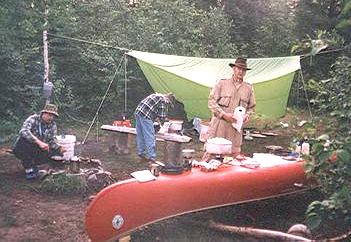Gas saving ideas from a cheap frog
The increased cost of reaching our wilderness destinations is dramatically affected by the rising prices for gasoline (petrol). Rather than cancel trips or limit travel to less remote venues, here are some ideas from Kermit to decrease the impact on your pocket book. A 10% improvement is not unrealistic and can amount to a lot on a $70 fill-up.
Equipment Maintenance
Maintain tire pressure
Low pressure will cause considerable increase in fuel consumption, not to mention reducing tire life. Follow the manufacturer’s recommendations on the inside of the driver’s side door. You may want to err a few pounds on the high side as under pressure has greater problems than over pressure. HINT. Tire pressure must be checked before driving and while tires are still cool, If you don’t have a compressor, put in a little extra pressure in them at the service center and then lower the pressure to the desired amount in the morning before starting out.
Keep the air filter clean
Like me, most people ignore regularly changing the air filter. Check your owner’s manual for recommended changing frequency.
Change spark plugs
Again, check your owner’s manual. Most new cars can go 100,000 miles (160,000 KM) on a good set of spark plugs.
Clean the fuel system
It is important to have the fuel injection system cleaned as recommended by the manufacturer. Also, avoid discount gasolines as they are sold at a discount because they do not meet the standards of major brand products. Contaminents will leave deposits on the intake valves and in the fuel injectors.
Driving habits
Braking.
Keep your left foot off the brake. Plan ahead and avoid sudden or unnecessary braking. If the traffic signal ahead is red, get your foot off the gas early. Watch ahead for slowing traffic. Plan ahead when changing lanes to avoid disengaging the speed control.
Use the speed control when on the highway
Maintaining consistent driving speed is as important as driving at a slower speed.
Slow Down
Slower speed reduces friction and increases efficiency during highway driving. I don't follow this advice myself. My Pacifica minivan gets 30 MPG even at speeds above 70 MPH.
Avoid fast acceleration
This is most important in stop-and-start city driving.
